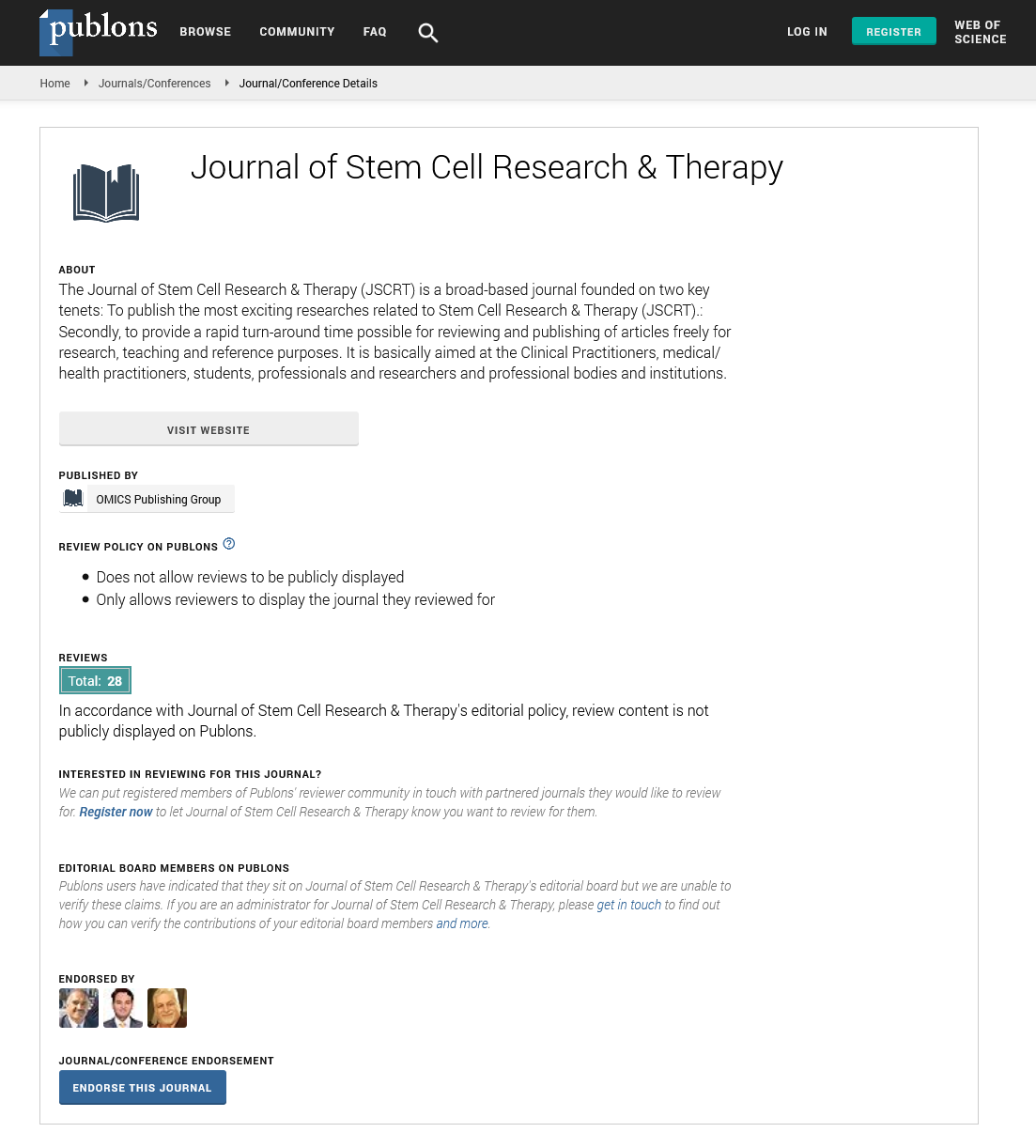Indexed In
- Open J Gate
- Genamics JournalSeek
- Academic Keys
- JournalTOCs
- China National Knowledge Infrastructure (CNKI)
- Ulrich's Periodicals Directory
- RefSeek
- Hamdard University
- EBSCO A-Z
- Directory of Abstract Indexing for Journals
- OCLC- WorldCat
- Publons
- Geneva Foundation for Medical Education and Research
- Euro Pub
- Google Scholar
Useful Links
Share This Page
Journal Flyer

Open Access Journals
- Agri and Aquaculture
- Biochemistry
- Bioinformatics & Systems Biology
- Business & Management
- Chemistry
- Clinical Sciences
- Engineering
- Food & Nutrition
- General Science
- Genetics & Molecular Biology
- Immunology & Microbiology
- Medical Sciences
- Neuroscience & Psychology
- Nursing & Health Care
- Pharmaceutical Sciences
Mesenchymal stem cells and 10-dehydrogingerdione in cisplatin induced renal fibrosis: A potential therapeutic target
5th International Conference and Exhibition on Cell and Gene Therapy
May 19-21, 2016 San Antonio, USA
Mohamed Shawky, Mohamed M Elseweidy and Nahla N Younis
Zagazig Univesity, Egypt
University of Tabuk, Saudi Arabia
Scientific Tracks Abstracts: J Stem Cell Res Ther
Abstract:
Objective: Renal fibrosis is the common end point of most progressive renal diseases. Renal fibrosis shouldnâ??t be viewed as a simple and uniform scar but rather as a dynamic system. Pathological fibrosis results in glomerulosclerosis, tubular atrophy and dilatation and tubulointerstitial fibrosis. Thus, effective treatments that halt or perhaps induce regression of renal fibrosis have potential to provide an immense medical, social and economical benefits. Mesenchymal stem cells have a potent regenerative power for regeneration of different tissues had been approved recently. In our study which aims to determine the therapeutic effect of stem cells for the treatment of renal fibrosis induced by cisplatin and the evaluation of a natural extract from ginger (10-dehydrogingerdione) for this purpose also. Methods: Renal fibrosis induced via a single dose of cisplatin (4 mg/kg body weight) intraperitoneal per rat and then fibrosis had been evaluated through Massonâ??s Trichrome stain for kidney tissues sections after 1 week from cisplatin administration. Rats were divided into 4 groups. Kidney functions were determined, nuclear factor-kB (NF-kB), insulin like growth factor-I (IGF-I), fibroblast growth factor-23 (FGF-23), hepatocyte growth factor (HGF), kidney lipid peroxidation (MDA) and glutathione reduced (GSH) had been also determined. Hematoxylin & Eosin (H&E) and Massonâ??s Trichrome (MT) stains had been performed too for kidney tissues. Results: Administration of mesenchymal stem cells and 10-dehydrogingerdione has been existed a significant decrease in kidney functions, NF-kB, IGF-I, FGF-23 and kidney MDA, while caused a significant increase in the antifibrotic HGF and antioxidant kidney GSH as compared with renal fibrotic rats. Histopathological findings existed an enhancement in kidney architecture in both H&E and MT stains as compared with those of renal fibrotic rats. Conclusion: According advanced results which conclude that administration of stem cells and 10-dehydrogingerdione may have a potential therapeutic target in renal fibrosis induced by cisplatin.
Biography :
Mohamed Shawky has completed his MSc in Pharmaceutical Sciences in the field of Biochemistry from Zagazig University, Egypt. He is the lecturer of Clinical Biochemistry, Faculty of Pharmacy, University of Tabuk, Saudi Arabia.
Email: mohamedshawky1@hotmail.com

